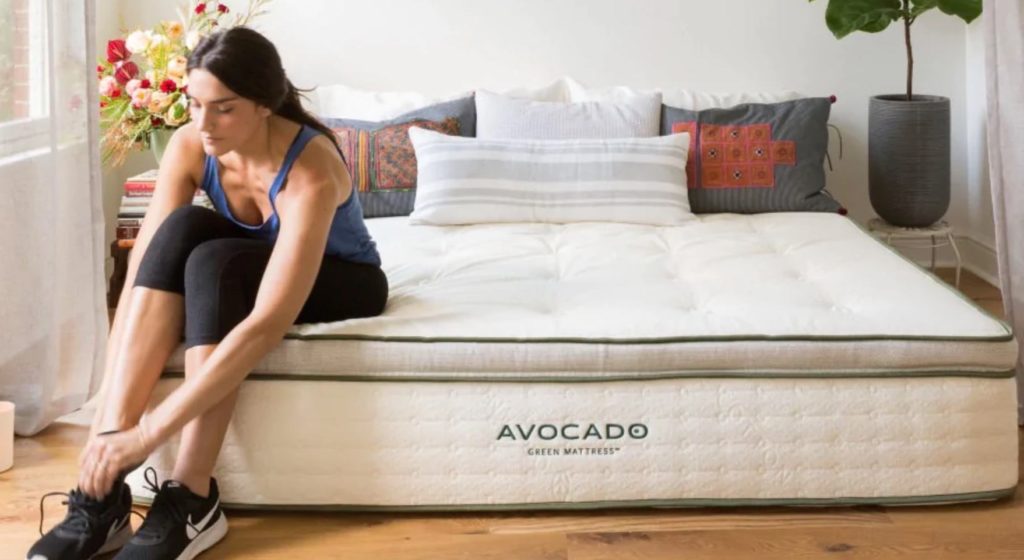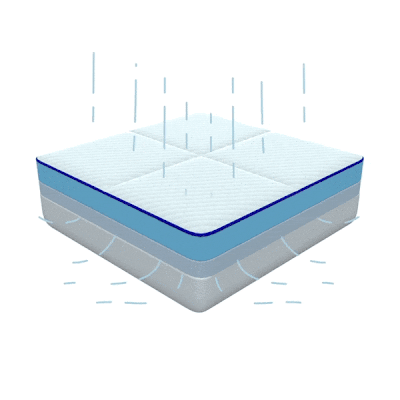The Best Mattress For Side Sleepers, According To A 25 Year Mattress Industry Pro
I Tested And Reviewed Dozens Of Mattresses For Side Sleepers…Here’s What I Found

After spending a career designing the web’s most popular mattresses, I found that the best mattress for side sleepers comes down to one little jingle: softer up top, and firmer down below.
About 70% of us are side sleepers that tend to change positions during the night, and the chief complaint when lying on the “razors edge” is that mattresses tend to pinpoint pressure rather than relieve it.
This is because a lot of mattress options are poorly designed, made with cheap, inferior polyurethane foams, and are not tuned or calibrated to distribute your weight sideways rather than down.
From Pain And Pressure Relief, Cooling To Couples, Here’s My Cut To The Chase List Of Side Sleeper Mattress Options I’d Buy For Myself
| Nolah Evolution 15" Hybrid Mattress-best cooling | Read My Review | Up To $1,008 Off |
| Avocado Eco-Organic Mattress-best latex/coil | Read My Review | Up To 10% Off |
| Dreamcloud Premier Hybrid Mattress-best spine support | Read My Review | Up To $470 Off |
| Saatva Memory Foam Hybrid-best innerspring | Read My Review | Up To $600 Off |
| Nectar Premier Mattress-best all foam | Read My Review | Up To $600 Off |
| Plushbeds Botanical Bliss Mattress-best 100% latex | Read My Review | Up To $1250 Off |
| Nolah Natural Mattress-best pain relief | Read My Review | Up To 30% Off |
What Kinds Of Mattresses Are Best For Side Sleepers?
The best mattresses for side sleepers have the ability to provide yielding comfort while at the same time, properly cradle and support your body to avoid creating that “digging your way out” sensation. This requires a mattress designer to understand things like foam density, textiles, lamination, and other technical stuff.
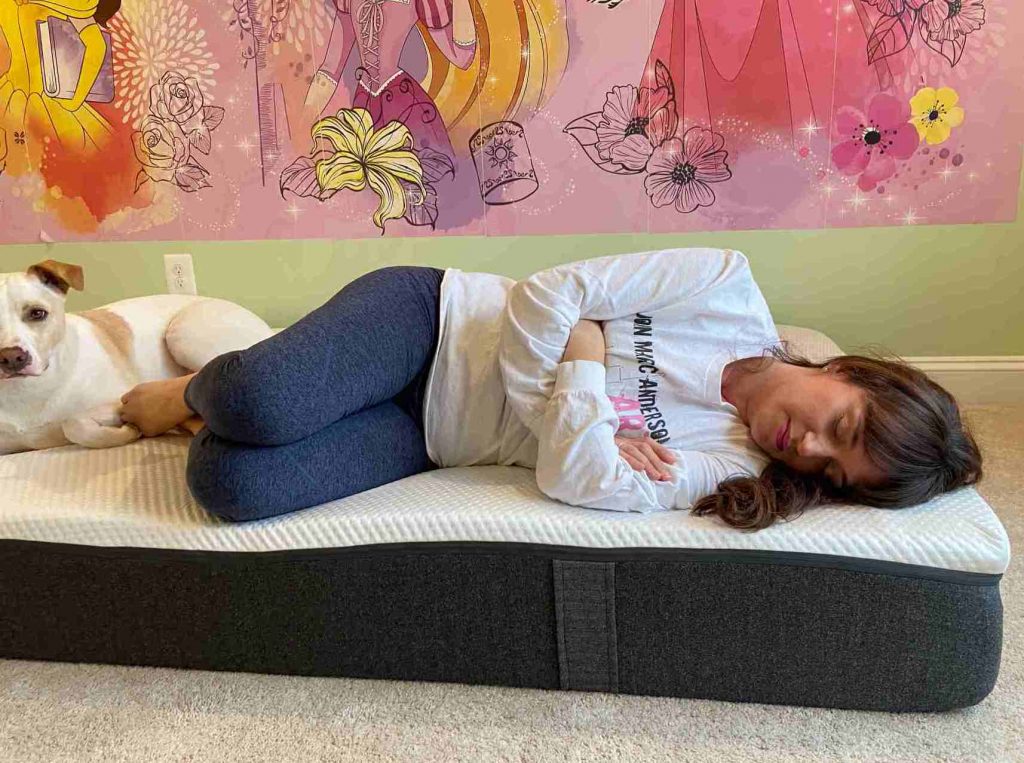
I spent 25 years in the industry as a mattress designer and components expert and I can tell you that sleeping on your side puts the maximum pressure along the entire edge of your body, so pressure relief is super important. The best mattress for side sleepers provides cushioned comfort right up top, but has to effectively move weight laterally to the edges of the mattress.
To create a mattress that performs well for side sleepers, it’s also important to blend components that effectively push weight away from the body to the sides rather than down (pinpoint pressure).
I designed side sleeper mattresses for years using everything from memory foam to latex, to pocket coils, organic cotton, gel foams, even silk. Here are some options I’ve personally slept on and recommend.
Let’s review the different kinds of mattresses that are typically your best options when it comes to minimizing pressure points, especially at your shoulders and hips- if you love to sleep on your side as much as I do:
- Memory Foam Mattresses: Historically, memory foam has been heralded as the go-to option for pressure relief. Memory foam mattresses are known for their ability to mold to your body shape as they conform to the body’s shape and do provide effective pressure relief. They distribute body weight evenly by pushing it to your side rather than down, and can help alleviate sore pressure points, reducing pain and discomfort for side sleepers.
- Hybrid Mattresses: Hybrid mattresses combine the benefits of memory foam and other kinds of quilted materials including cooling foams with a coil component placed near the bottom. This combination offers both support and fairly deep cushioning, making them a good choice for side sleepers.
- Natural Latex Mattresses: Latex mattresses are known for their fast responsiveness, livelier feel, and extreme durability against depressions and rutting. They offer a balanced level of support and contouring, which can help relieve pressure points for side sleepers. Natural latex mattresses are also hypoallergenic, repel dust mites, are naturally antimicrobial, and provide good airflow.
- Pillow-Top Mattresses: Pillow-top mattresses have an extra layer of soft padding, which may or may not be quilted with foam, on top for added comfort. This extra cushioning can be beneficial for side sleepers as it provides additional softness and pressure relief to the hips and shoulders.
Your Body Type And Weight Has A Big Influence On The Best Mattress For Side Sleepers
Mattress companies often take shortcuts to save costs, and the biggest trick in the book is to use inferior foam layers that don’t last long and easily compress over time. If you are a side sleeper, having to dig your way out of your mattress can interrupt sleep patterns, leaving you feeling exhausted when you get up in the morning.
Many side sleepers can’t sleep on their backs or their bellies (actually, sleeping on your belly can cause back pain, since your body tends to arch, which cantilevers muscles and creates lactic acid buildup during the night). Side sleepers come in many forms, including those that flip from side to side, side to back, and even “pillow tuckers” who stuff pillows between their knees while on their side.
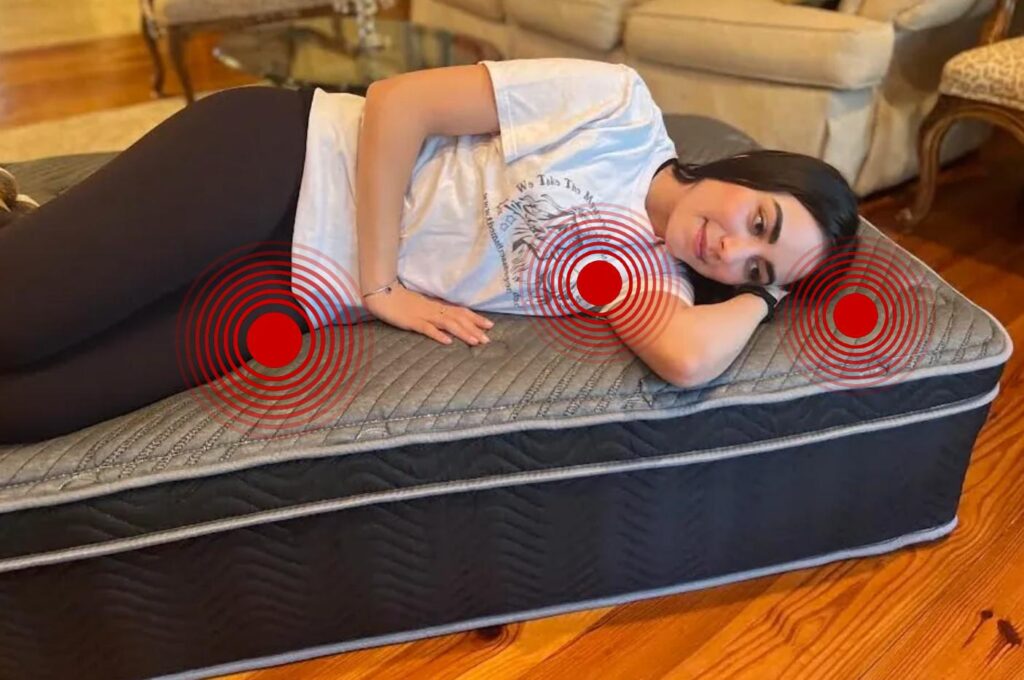
For side sleepers, especially if you are a bigger person, say over 250 lbs. and sleep with a partner who has a bigger body, you want to also make sure you choose a thicker, loftier mattress too. If you’d like, check out my page on best mattresses for bigger bodies here.
A hybrid mattress made using a combination of coils and foam, along with various “cushy” textiles near the top allows you immerse slightly and disperses body weight and pressure to the sides of the mattress. You won’t tend to bottom out on the mattress either.
As a rule, if you sleep primarily on your side, you can consider an all foam mattress if you weigh less than 180 lbs., sleep alone, or if you are petite in size. Side sleepers put more stress on any given mattress because you are concentrating weight in a very small area. I’ll give you options for both hybrid and all foam mattresses as well.
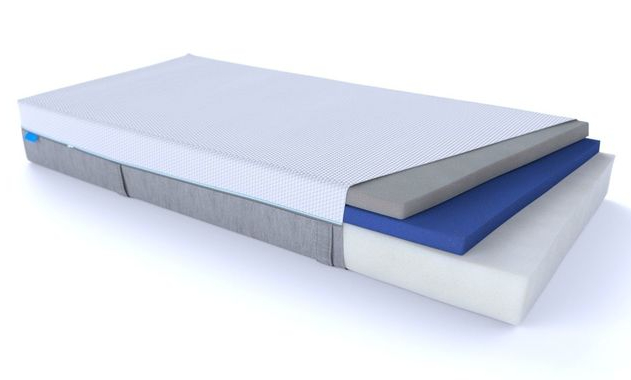
Many online mattress companies offer all foam mattresses that are easy to ship, since they are often rolled and compressed, however, it’s important that they be thick enough to allow for compression up top.
Usually, you’ll find what are called “comfort layers”, typically memory foam, latex, or gel foams. These foam layers come in different densities, meaning levels of compressibility, or how easy you can mash them down with your hand.
You can read more about memory foam on our memory foam page, which explains how this unique material relieves pressure and pain. Gel foam is a polymer material that is also popular, and is typically mixed in with memory foam, making it more flexible and “jelly like”.
In our list of best mattresses for side sleepers below, I’ll give you direct links to several mattresses made entirely of foam that I think will offer good pressure relief and support.
We tested a variety of all foam mattresses that are forgiving on both hips and shoulders and properly distribute weight so you don’t feel pinpoint pressure.
Difference Between Innerspring And Hybrid Mattresses
For side sleepers, especially couples, and anyone over 200 lbs. in weight, a hybrid mattress is a better option because this recipe will provide better support without collapsing in the middle than an all foam mattress.
One confusing point that many people write me about is the difference between a conventional innerspring mattress and a hybrid foam/coil combination.
Most old school mattresses are what are commonly called “innerspring” mattresses, which usually consist of a wired metal coil section on the bottom which can be up to 12″ tall, and were woven together and typically are not very efficient at preventing motion transfer or collapsing over time in the middle of the mattress.
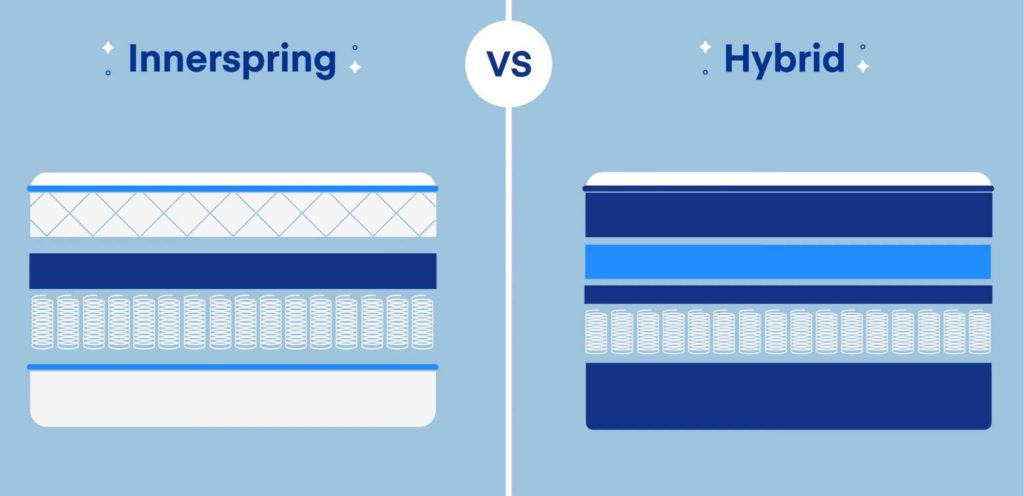
An innerspring mattress had a small underlying foam layer at the bottom, designed merely to keep the underlying bed piece from being damaged by the metal coils.
Above the one piece spring contraption, there might be layers of cotton, some dense polyurethane foam, and layers of textiles like cotton, wool, or other materials to provide some form of cushion on back, shoulders, and hips.
A modern day hybrid mattress is a fusion of individually pocketed coils and advanced foam layers that can actually cool your body down, and provide optimized support by moving weight away from your body.
It might be the best side sleeper mattress out there, considering that a hybrid mattress can be vacuum packaged, rolled, and delivered directly to your door.
In addition, they can be easily setup in your home by you and typically one other person.
Why Sleeping On Your Side Is So Good For Your Body And Brain
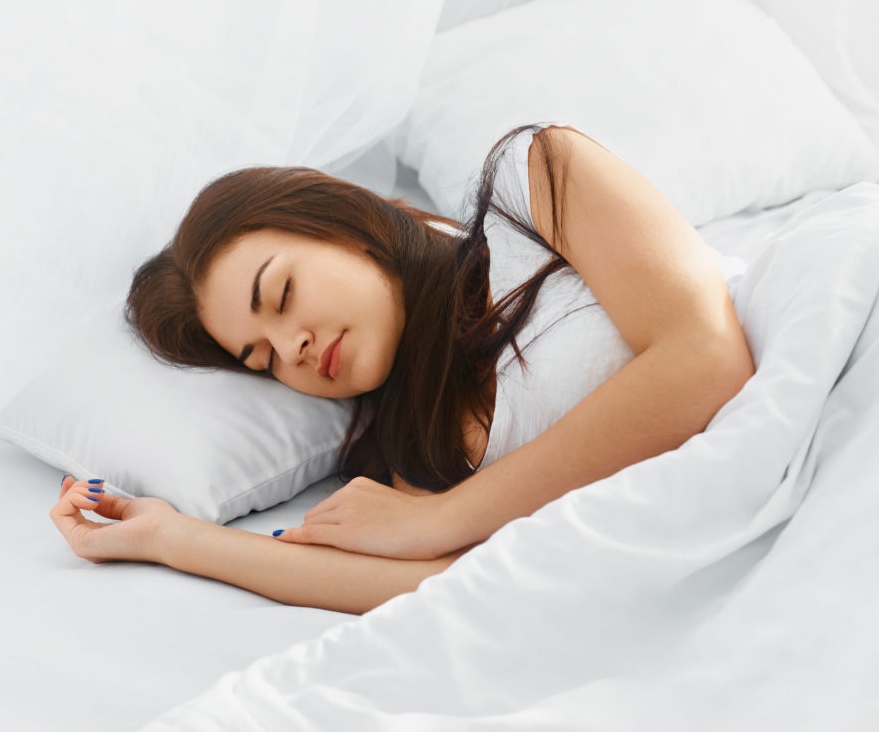
There are plenty of healthy advantages to sleeping on your side. It reduces snoring, so it’s great for anyone who has sleep apnea or COPD, it’s healthier for your heart, and for pregnant women, it is far more comfortable and is often associated with easier pregnancies.
Shopping for a mattress for side sleepers though can be tricky, because you aren’t spreading your weight across the mattress uniformly, so finding the right balance of yielding softness and underlying lift and support is important.
For couples who tend to spoon on their side, I always tend to recommend a hybrid mattress with a pocketed coils system beneath comfortable foam layers up top, and this applies to people over 200 lbs. as I mentioned above.
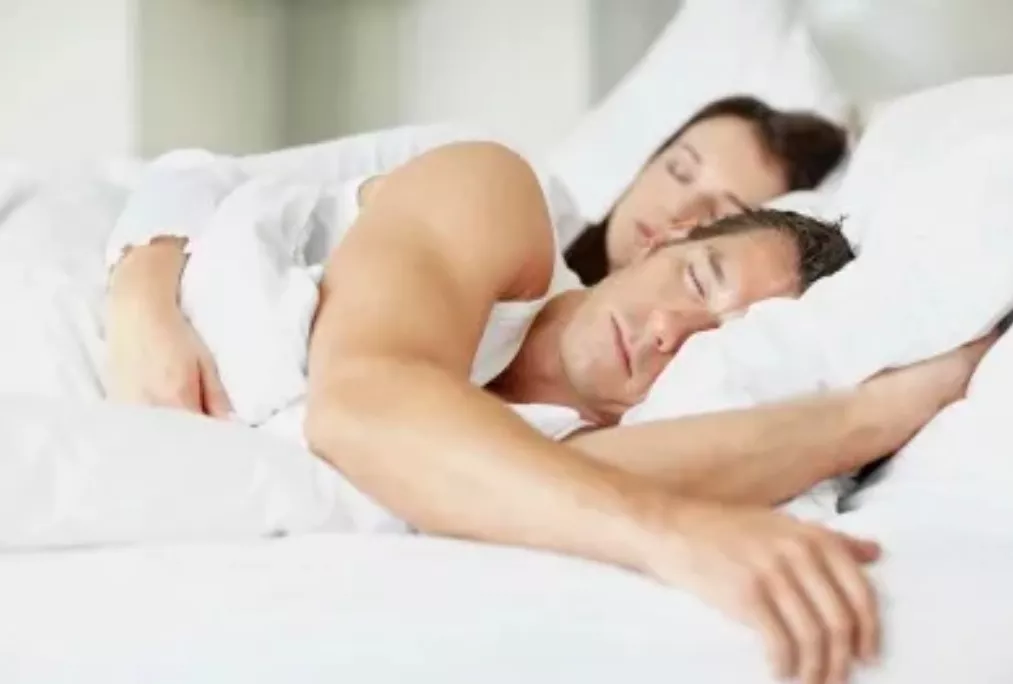
The best mattresses for side sleepers have a few things in common. The top layers are often composed of a fairly soft layer of memory foam, gel foam or natural latex. Right below that layer is a specialized foam layer that helps to move weight sideways rather than downwards.
The outer fabrics or textiles can be either natural cotton, bamboo, or a technical synthetic fabric which has cooling properties and remove body heat.
My recommended list for side sleepers includes a variety of options designed to both deliver more comfort and support, but also to help balance you as you sleep on your side. Just the right amount of immersion can “prop up” your torso which helps to allow muscle groups to relax instead of working having to balance your body throughout the night. If a side sleepers mattress is too firm, you risk waking up fatigued and deprived of restorative REM sleep.
Too soft, and you may sleep hot and restless, and it may cause your spine to arch or remain curved, causing pain in the morning. I’ve got a selection of side sleeper mattresses I recommend for hot sleepers as well, that are very popular.
If you live in Canada, you may want to visit my Best Mattresses In Canada Page to checkout several options I’ve reviewed and tested for side sleepers.
The Best Mattresses For Side Sleepers I’ve Personally Reviewed And Tested
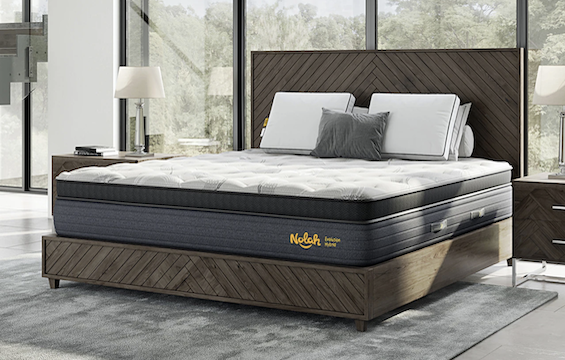
THE NOLAH EVOLUTION 15″ HYBRID MATTRESS
For couples, singles, hot sleepers, and larger folks, this mattress is excellent as a side sleeper option. Frankly, it’s one of my favorite all around mattresses. $1609 in queen.
It’s loaded with tech, including advanced cooling, support, and comfort features; graphite infused foam that wicks away heat and moisture, and it’s cozy and immersive enough without feeling like you’re stuck.
Plus, I liked the superb edge support for sitting and getting in and out, and it felt sumptuous and nest like- but not hard underneath.
It’s $1609 in queen size, and the company offers a 120 night no questions asked trial period, free returns and shipping, and it’s 100% made in the USA.
The pillow top section up top is wonderful, inviting, it’s not spongy or too billowy, and it’s available in three firmness option from plush to firm.
For side sleepers specifically, you won’t find wake up digging yourself out in the morning- we tested it for precisely that common problem! Cons: It might be a little tall for some people.
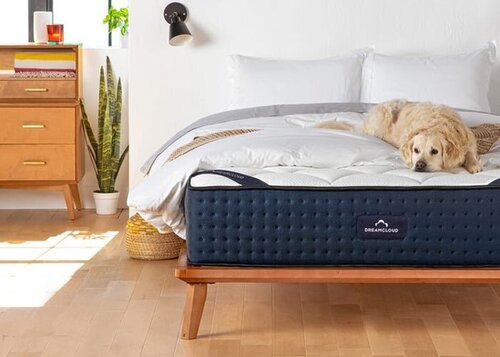
THE DREAMCLOUD PREMIER HYBRID MATTRESS
This mattress, being a bit firmer in feel, is a 14” hybrid mattress with individually pocketed coils, a quilted, silky cashmere top and is a firmer option for couples. $1599 in queen size.
If you are both side sleepers but like a slightly firmer feel, it’s a good option. It’s half the price of comparable big box pillow top innersprings, which are often stuffed with cheap foams near the top, and can feel mushy and spongy. With over, 4,971 reviews, it ranks a solid 4.8 consistently, not easy to achieve- and that’s on Google.
Couples love it for its motion dampening qualities, great edge support, and its comparison to hotel and resort caliber mattress.
For the money, it’s a value-because it is embellished with a quilted cashmere top piece (which feels like silk!) and two layers of sink-right-in gel/memory foam. But no bottoming into it, even where you are cuddling in the middle.
For the money, it’s a solid investment, a tad firmer than I like but overall reviews make me a bit more confident about this pocket coil and foam hybrid.
THE AVOCADO ECO-ORGANIC MATTRESS
For side sleepers, natural latex offers buoyancy and the sensation that you are on top of the mattress, not trapped inside. It’s made with no petroleum based products.
Avocado uses organic certified latex from tree-tapped sources, 100% GOTS organic certified wool and 100% GOTS organic certified cotton. To you, that means no-off gassing, or ghastly chemical textiles- and side sleeping bliss.
Note that this mattress is a bit more expensive, because it’s made top to bottom with pure latex only-no springs, no polyurethane foam. Queen $1299.
Made in California in their own factories, a purely American company. The latex used is imported from India, collected by hand, and is the silkiest and smoothest botanical latex available. Gets rid of pressure at shoulders and hips.
Note: it’s typical for natural latex to cost more because it’s hand collected and has to be converted to it’s jiggly and elastic solid form.
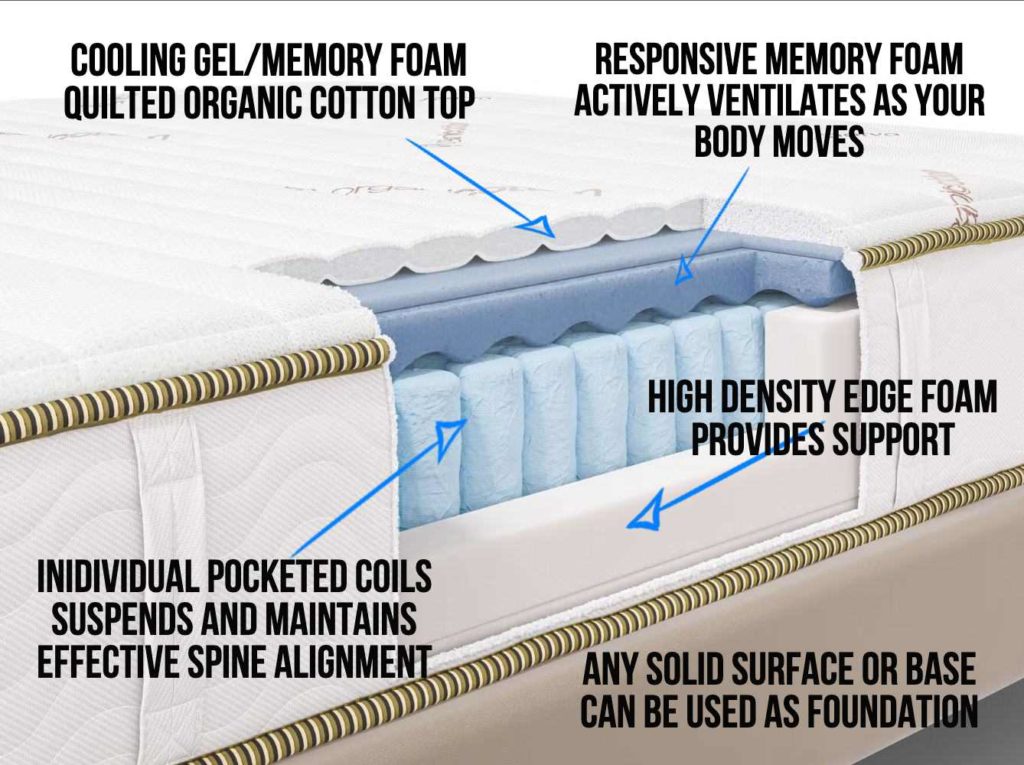
SAATVA MEMORY FOAM HYBRID MATTRESS
For couples who spoon or snuggle, I recommend this as an option. Pocketed coil and foam hybrid mattress with sumptuous “euro” top, virtually no sinking in yet pressure relief at hips and shoulders.
Medium level of support, you will not feel trapped. Turning is effortless. I also like the firmer edge support for sitting, putting on shoes, and transfer in and out. It’s 14.5” tall finished height, you get a 120 night trial period, 15 year warranty, $1,495 in queen. Free shipping.
Marc’s comments: No “dead memory foam” feel, responsive and lively due to good balance of pocket coils and quilted pillowtop thickness.
If you like to nestle and squirm a tad before finding your sweet spot, this might be a good option for you. I got pretty comfortable very quickly, and turning was pretty effortless.
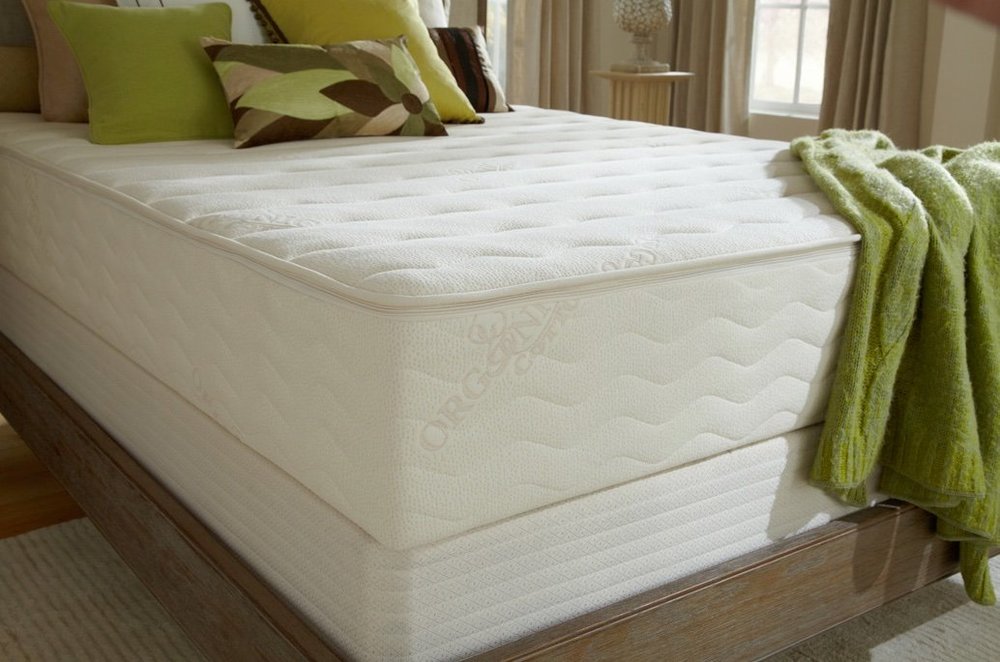
Plushbeds Botanical Bliss Pure Latex Mattress
For pressure relief, this mattress is one of my favorites for side sleepers. Crafted from multiple, 3″ thick layers of pure botanical latex, you choose from 9″, 10″, or 12″ depending upon your weight and plushness preferences.
For people who sleep on their sides preferably, (and if you struggle with pain) natural latex is highly elastic, buoyant, and doesn’t bottom out.
There are less expensive brands of natural latex mattress that are made with alternating layers of polyurethane foam. This is one of few top to bottom natural latex options that is affordable. Read my in depth review here.
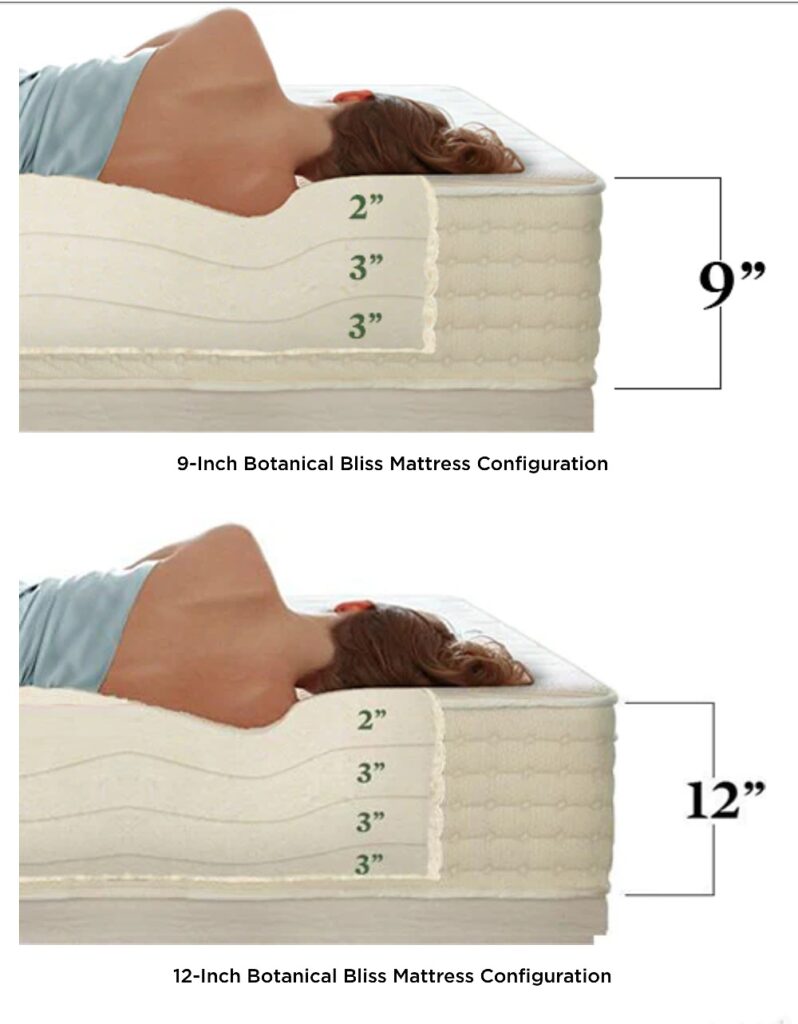
You get a 100 night no questions asked trial period and a hassle free lifetime warranty that covers indentations, and craftsmanship.
The outermost fabric is an elastic stretch knit material that flexes with your body as you change position- not stiff, and not trampoline like.
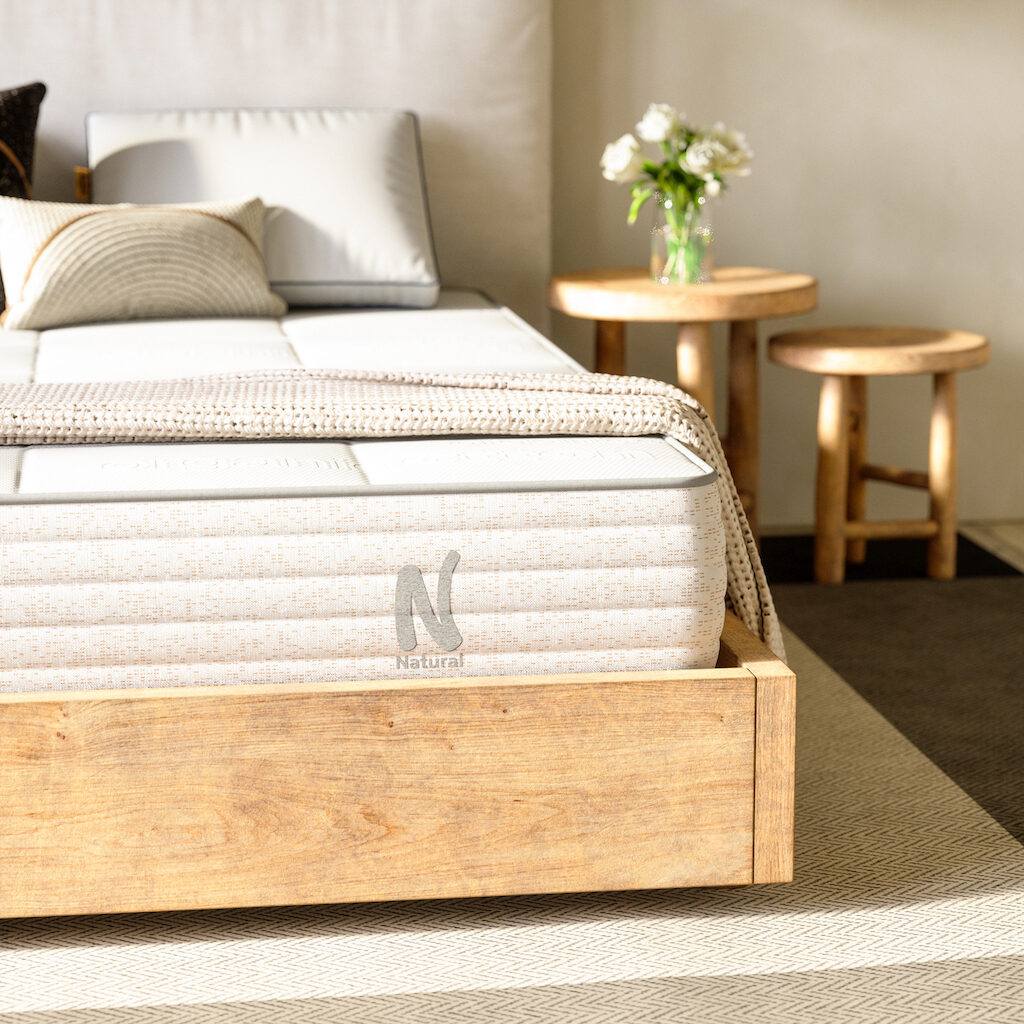
THE NOLAH NATURAL 11″ HYBRID MATTRESS
I reviewed it, slept on it for weeks, and loved its invigorating, bouncy feel. For a side sleeper option, it’s hard to beat it. Individually pocketed coils for excellent edge support, too. Organic cotton, organic wool, and sustainably sourced pure botanical latex. Ten year warranty, 120 night trial. Two free “squishy” pillows you’ll fight over. $1199 in queen. Consistently rated highly by owners.
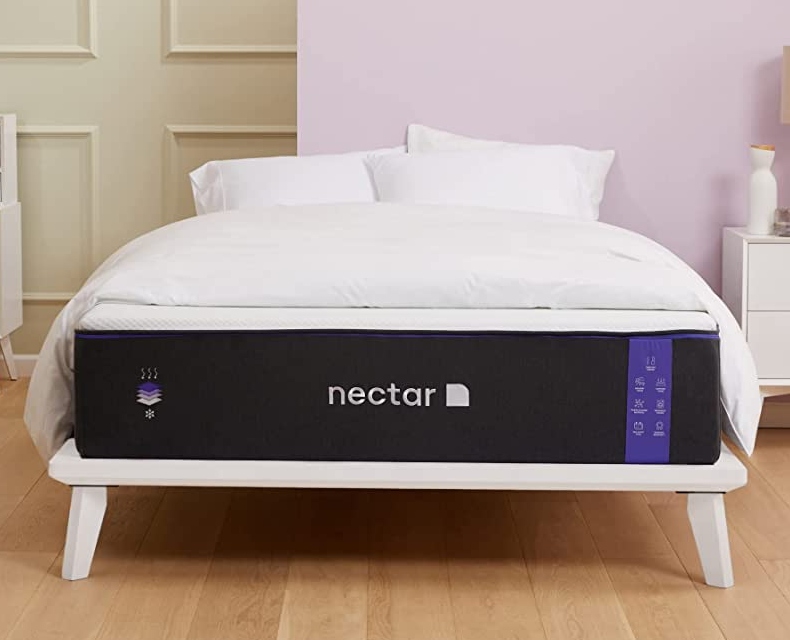
NECTAR PREMIER MATTRESS
The Nectar Premier Mattress is a well known brand with a cult like following. Outfitted as a gel/memory foam mattress, it also uses CertiPur® non-toxic ingredients, so there are no toxic fumes.
No odor, no exposure to heavy metals. 365 Day Trial, Forever Warranty. Get $300 off with my link, free sheets, 2 pillows, and a mattress protector! Consistent reviews, this bed’s one of my favorites.
A medium feel, slightly softer and spongier, but excellent on shoulders especially. At 11″ tall with great edge support, it’s the perfect thickness for both couples and solo sleepers. Hip immersion is just right for pressure relief and making it easy to turn.
Many of my readers and followers order them and then write me back about their shoulder and hip pain relief. A real side sleeper consideration.
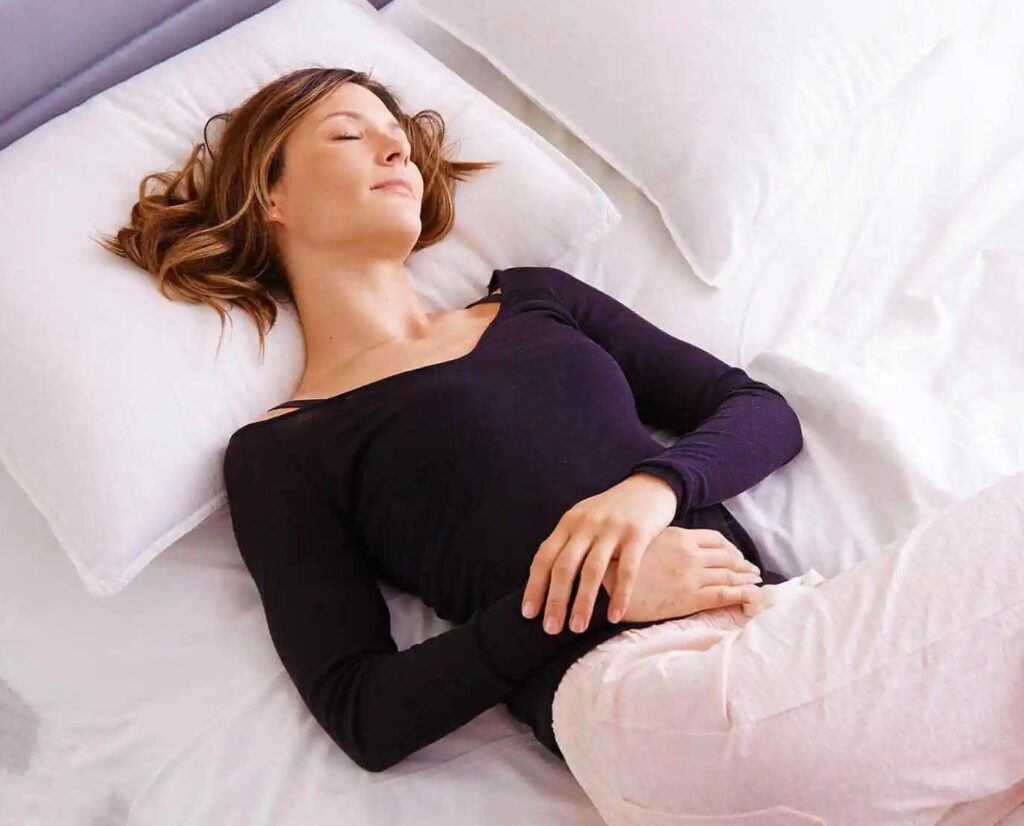
SAATVA LATEX HYBRID MATTRESS
At 12″ tall, and filled with a 3″ layer of organic latex, this luxury latex hybrid contains a pocketed coil system topped off with a hand tufted Euro top quilted organic cotton cover. Five ergonomic zones, I found the shoulder and hip pressure relief to be outstanding. $1895 in queen.
A 365 day trial, lifetime warranty, and free in home setup service underscores the appeal of my favorite online luxury mattress brand.
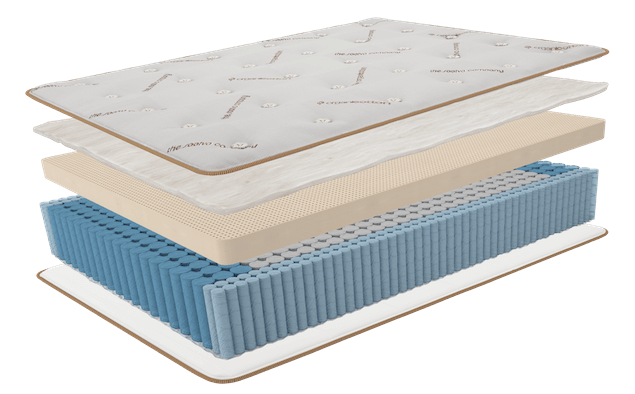
Almost Everyone Is A Side Sleeper: Our Mattress Survey Tested This Theory
About a year ago, we started offering a mattress survey to help people choose their “dream mattress” and began collecting data that showed clearly that most people sleep on their side most of the night. In fact, many people start shopping for a new mattress because they flip from side to side so much during the night that their sleep becomes disrupted.
Which Side Should I Sleep On And Is One Better Than The Other?
First thing to remember is that our bodies are not symmetrical and our organs our laid out in such a way that there are certain benefits to lying on one side or the other based on many factors, according to medical pros.
For example sleeping on your left side tends to be the most comfortable and natural position for pregnant women, people suffering from acid reflux, sleep apnea, and even hypertension.
For pregnant women, left side sleeping helps move blood more efficiently to the uterus, since the heart has less compression against it in this position. In fact, for any person with cardiac issues or sleep apnea, the architecture of the heart and lungs helps your body to less work while you are sleeping, especially while you are on your left side.
For many of us, acid reflux is a problem, and in fact, sleeping on your back can actually worsen the problem as it creates a straight and level “drain” for acid to pour from your stomach back up into your esophagus, irritating the lining, even as far up as your throat.
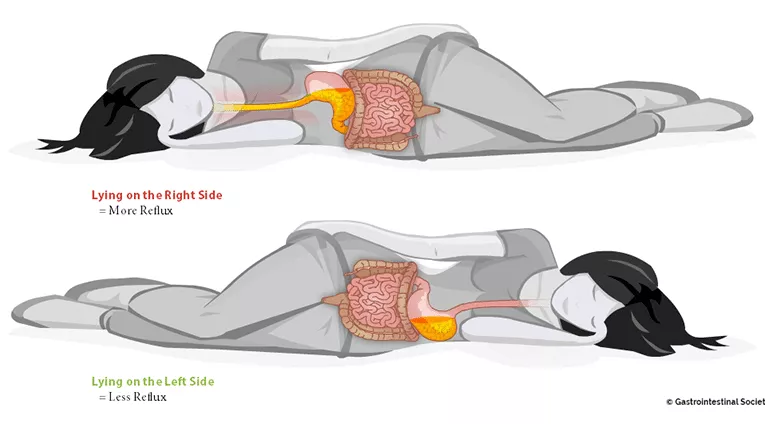
Sleeping on your left side limits the amount of stomach acid that drips into your throat, and can even eliminate hoarseness and throat clearing.
As a result, you will likely sleep deeper and get more restorative benefit as well by sleeping on your left side.
Also, sleeping on either left or right side can open up nasal passages and reduce sleep apnea by keeping your trachea from collapsing. Lying on your back or belly actually places a lot of weight and causes the trachea to stretch so that it forms a u-shape instead of a more efficient o-shape.
Benefits of Sleeping On Your Right Side
Sleeping on your left side may not be for everyone, however. Check out this article that even suggests that sleeping on your right side can help reduce anxiety, and suggests that as we age, many of us actually slowly transition to right side sleeping on our own.
Sleeping on your right side can have potential benefits for certain individuals due to its effects on anatomical and physiological processes. It is essential to note that individual preferences and specific health conditions may vary, and consulting a healthcare professional is always recommended for personalized advice. With that in mind, here’s a technical explanation of some potential benefits of sleeping on your right side:
- Gastric Emptying and Acid Reflux: The right-side sleeping position may help with gastric emptying and reduce the risk of acid reflux or heartburn, especially in individuals with gastroesophageal reflux disease (GERD). The stomach is located on the left side of the body, and sleeping on the right side allows the lower esophageal sphincter (LES) to stay above the level of stomach acid, potentially reducing the likelihood of acid flowing back into the esophagus.
- Lymphatic Drainage: The body’s lymphatic system plays a crucial role in maintaining fluid balance and removing waste from tissues. Sleeping on the right side may facilitate better lymphatic drainage since the dominant lymphatic duct, called the thoracic duct, is on the right side. This positioning could aid in the efficient transport of lymph fluid back into the bloodstream.
- Cardiac Function: For some individuals with specific heart conditions, sleeping on the right side might reduce pressure on the heart. It can potentially be beneficial for people with congestive heart failure (CHF) or other cardiac issues, as it may decrease the workload on the heart and improve blood circulation.
- Pregnancy: Pregnant individuals might find relief from certain discomforts by sleeping on their right side. This position can improve blood flow to the fetus and uterus, prevent the weight of the baby from pressing on major blood vessels, and reduce the risk of supine hypotensive syndrome, which can occur when lying on the back during late pregnancy.
Despite these potential benefits, it’s important to emphasize that individual factors, such as existing medical conditions, personal preferences, and comfort, play a significant role in determining the ideal sleeping position. Additionally, research on the subject is ongoing, and different sources may present varying opinions.
On the other hand, sleeping on your back (supine position) is generally considered one of the best sleeping positions for most people, as it helps maintain proper spinal alignment and minimizes the risk of developing pressure sores. It is also beneficial for reducing the likelihood of developing facial wrinkles, as there is no direct pressure on the face. However, back sleeping might not be suitable for those with sleep apnea or snoring issues.
Sleeping on your left side may be recommended during pregnancy (specifically the left lateral position) as it improves blood flow to the placenta and enhances nutrient delivery to the fetus.
In conclusion, while sleeping on the right side can have certain advantages for specific health conditions, the best sleeping position for an individual depends on their unique needs and medical considerations. It is essential to prioritize comfort and quality of sleep while considering any potential health benefits. Always consult with a healthcare professional for personalized advice on the most suitable sleeping position for your specific circumstances.
Regenerate response
There is some research, though not a huge amount, that suggests that right side sleepers have a reduced frequency of nightmares, and tend to be calmer sleepers. Another benefit is that your central nervous system tends to quiet down, which reduces blood pressure and heart rate, and some research suggests that as we age, we naturally tend to sleep more on our right side because of this.
In a 2020 article that examines factors influencing sleep quality, there may be significant links between what positions we sleep in and the likelihood of heart disease and hypertension as we age. The brain might be employing a mechanism evolved over time that causes us to ultimately end up on our right sides at night to protect our hearts.
Cons of sleeping on your right side: If you suffer from GERD, sleeping on your left side is advantageous because of the anatomy of your GI tract. When on your right side, stomach acid can spill backwards into your esophagus, while sleeping on your right side allows it to naturally pour into your stomach where it is retained. The best mattress for side sleepers with GERD should be body conforming and not excessively firm.
Advice For Back Sleepers With Sleep Apnea
For back sleepers, sleep apnea might not be the best sleeping position. This is because your uvula, that small dangling piece of flesh in the back of the throat can drop and actually close the airway, causing intermittent breathing and stress on the cardiovascular system.
Sleeping on either side can help alleviate the problem and open up the airway. This can also lead to more restful sleep, too.
For side sleepers who have sleep apnea, the primary goal is to find a sleeping position that helps alleviate the symptoms of sleep apnea and promotes better breathing during sleep. It’s crucial to note that individual responses to different sleeping positions may vary, and it’s essential to consult with a healthcare professional for personalized advice. However, here are some technical recommendations based on medical literature:
- Sleeping on the Left Side: For individuals with obstructive sleep apnea (OSA), studies suggest that sleeping on the left side might be beneficial. Research has shown that the left lateral position can lead to a significant reduction in the number of apneas and hypopneas (partial blockages of the airway) compared to sleeping on the back (supine position) or on the right side. The reason for this improvement is not entirely understood, but it may be related to the anatomy of the upper airway and the effects on airway collapsibility. Citation: Cartwright, R. D., Lloyd, S., & Lilie, J. (1985). Krueger J. Sleep position training as treatment for sleep apnea syndrome: a preliminary study. Sleep, 8(2), 87-94.
- Elevation of the Upper Body: Side sleepers with sleep apnea may benefit from using an elevated sleeping surface or an adjustable bed that allows them to raise the upper body. Elevating the upper body can help reduce the severity of sleep apnea by promoting better airway alignment and reducing the pressure on the respiratory system. Citation: Jacobowitz, O., & Shah, F. A. (2017). Sleeping Position Modification in Obstructive Sleep Apnea: An Updated Meta-Analysis. The Laryngoscope, 127(2), 512–520. doi:10.1002/lary.26109
- Pillows and Support: Side sleepers with sleep apnea should choose pillows that support the head and neck, keeping the airway as open as possible during sleep. A properly supportive pillow can help maintain a neutral spinal alignment and prevent the airway from collapsing.
- Continuous Positive Airway Pressure (CPAP) Therapy: CPAP therapy is a standard treatment for sleep apnea. Regardless of sleeping position, CPAP therapy involves using a machine that delivers a continuous flow of air through a mask, keeping the airway open during sleep. Side sleepers using CPAP should ensure that the mask is appropriately fitted and comfortable to maintain therapy effectiveness throughout the night. Citation: Patil, S. P., Ayappa, I. A., Caples, S. M., Kimoff, R. J., Patel, S. R., & Harrod, C. G. (2019). Treatment of Adult Obstructive Sleep Apnea with Positive Airway Pressure. Chest, 155(3), 529–532. doi:10.1016/j.chest.2018.09.025
Remember that the effectiveness of different sleeping positions for individuals with sleep apnea can vary, and the best approach is to work closely with a sleep specialist or healthcare provider to determine the most suitable treatment plan and optimize sleep quality and overall health. Additionally, lifestyle changes, weight management, and other interventions may also be recommended to complement positional therapies for sleep apnea.
